Explore plant life on the edge with a few of our favorite Mount Goliath alpine wildflowers.
alpine Springbeauty
Scientific name: Claytonia megarhiza
Common name: alpine springbeauty
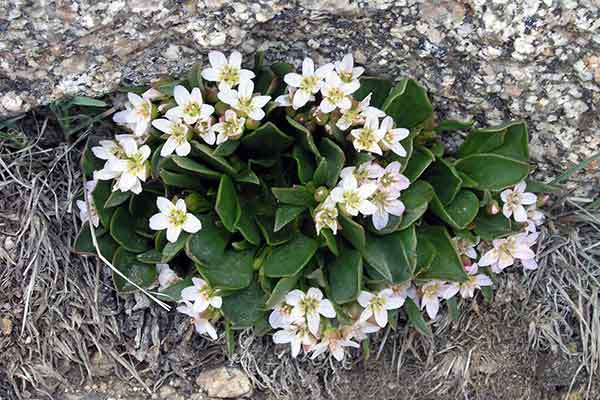
Photo by Connie Olson
Although this alpine plant looks small, the taproot can be up to eight feet long. The species is often found growing between rocks with abundant blooms ranging from white to pink. Marmots, pikas and ground squirrels often snack on its fleshy leaves.
king's crown
Scientific name: Rhodiola integrifolia
Common name: king's crown
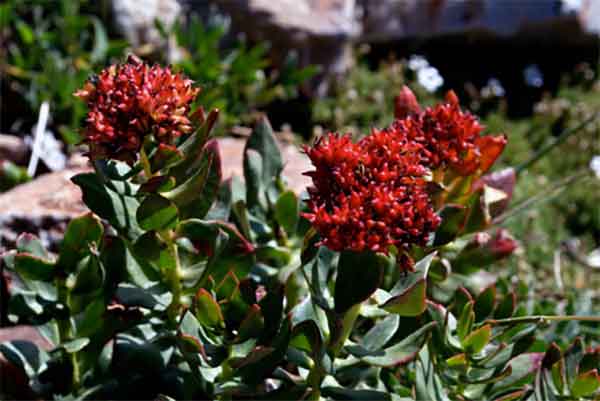
Photo by Kevin Gessner.
Growing in rocky areas with little soil, king's crown has small, dark red flowers and is distributed globally in northern latitudes and alpine areas. There are nearly 60 species in the genus Rhodiola, primarily found in Asia.
old-man-of-the-mountain
Scientific name: Tetraneuris grandiflora
Common name: old-man-of-the-mountain
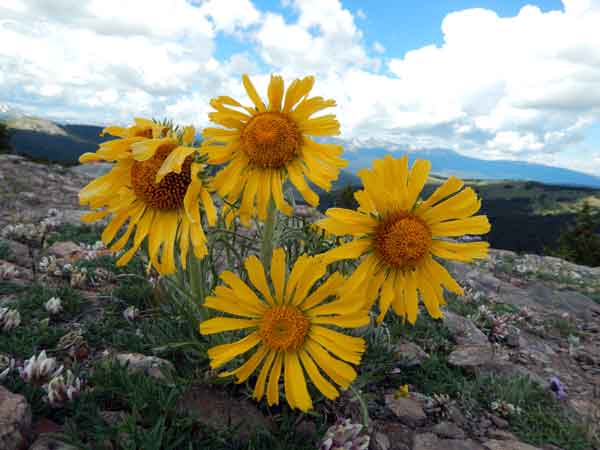
Photo by Connie Olson
An easily-recognized and showy alpine species, old-man-of-the-mountain has woolly stems and feathery leaves with large yellow flower heads composed of many tiny flowers. The flowers always face east or southeast, earning it a reputation as a "compass" flower.
bluebell bellflower
Scientific name: Campanula rotundifolia
Common name: bluebell bellflower
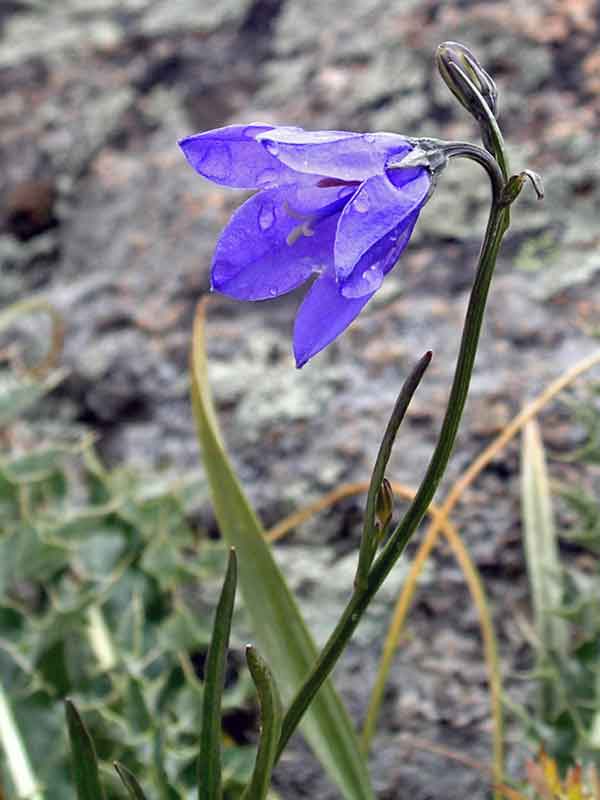
Photo by Connie Olson
With lavender-blue, nodding bell-shaped flowers, the harebell can be found throughout the world in the northern hemisphere. In Colorado, they are found from the plains to high mountains, and can live in habitats spanning over 8,000 ft. in elevation.
silky phacelia
Scientific name: Phacelia sericea
Common name: silky phacelia
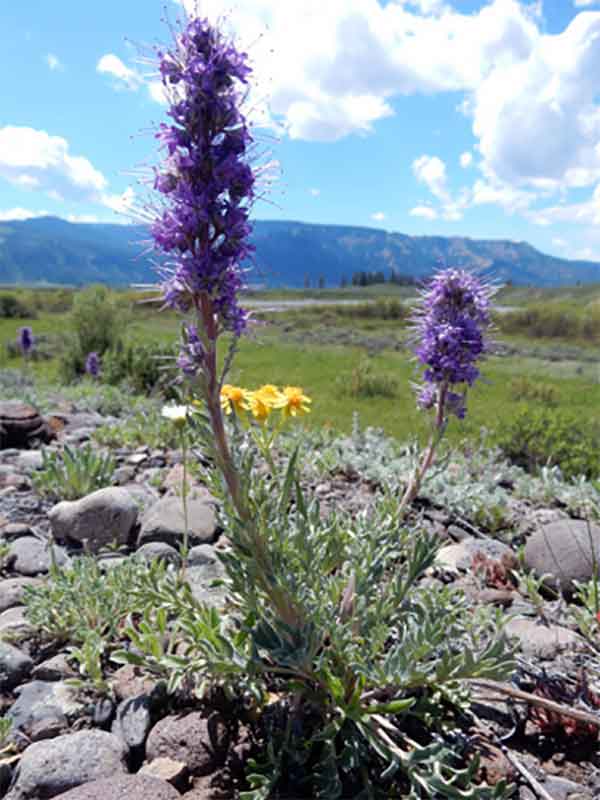
Photo by Matt Lavin.
The fern-like leaves of silky phacelia are covered in soft hairs. With their purple flowers arranged in a scorpion-tail shaped coil, these plants create a dramatic splash of color on the rocky slopes.
sky pilot
Scientific name: Polemonium viscosum
Common name: sky pilot
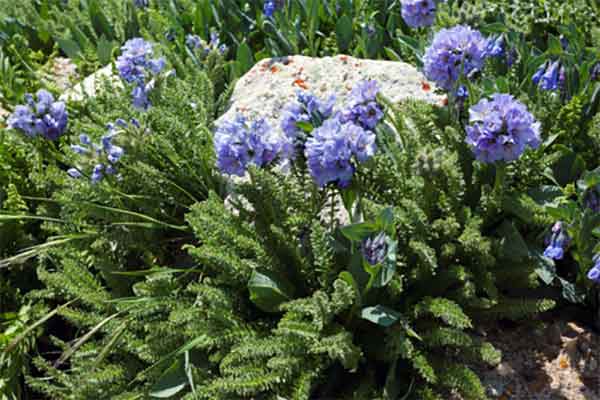
Photo by Patrick Alexander.
Also known as sticky polemonium, the entire sky pilot plant is sticky and smelly. At lower elevations, the flowers smell skunky, attracting flies for pollination. At higher elevations, the flowers have a sweeter aroma that attracts bees.
moss campion
Scientific name: Silene acaulis
Common name: moss campion
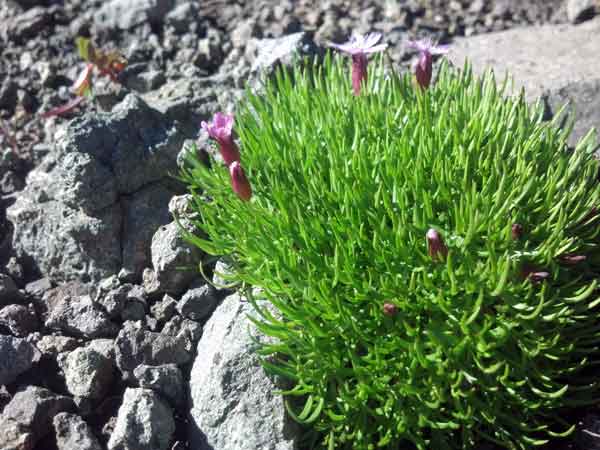
Photo by Connie Olson
This hardy species is cushion-shaped like many alpine species, hugging the ground to avoid the worst of the wind. A large cushion might be more than a hundred years old.
 |
 |
 |